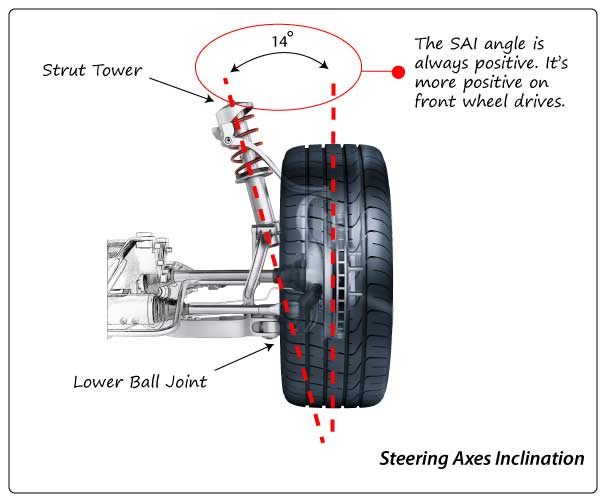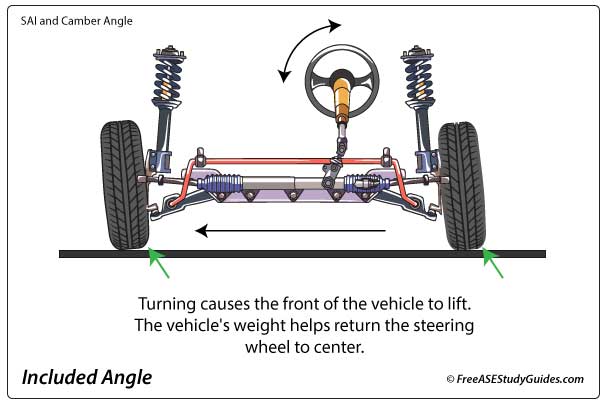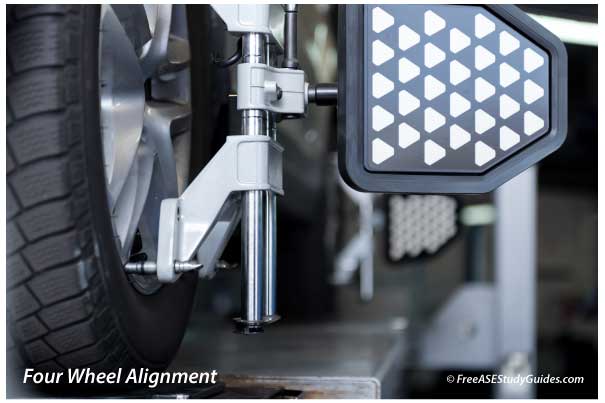Steering Axis Inclination

Steering axis inclination is the inward tilt of the suspension toward the center of the vehicle. The SAI angle is an imaginary line drawn through the upper strut and the lower ball joint and another true vertical line that runs through the center of the tire. The line runs through the upper and lower ball joints in a conventional suspension system.
Camber

Camber is the inward or outward tilt of the wheel as viewed from the front of the vehicle. The steering will pull to the side with the most positive camber, typically when there is over half a degree or more difference between the two.
The Included Angle

The included angle (SAI and Camber) causes the front of the vehicle to lift a little while turning. The vehicle's weight helps the steering wheel to return center. A positive caster and the included angle provide greater stability and help the steering wheel return to the center after turning.
Caster

Caster is the forward or rearward tilt of the strut as viewed from the side of the vehicle. Too little would cause the wheel to shimmy, and too much caster would make it hard to steer. Positive caster keeps the tire tracking behind the imaginary line created by the angle. The caster angle helps absorb road shock by transferring forces to the spindle and frame instead of the steering linkage.
Built-in Angles

SAI and the caster angle affect the vehicle's steering wheel return to center. Today's alignment machines measure SAI in degrees. SAI is built-in by the manufacturer and is not adjustable. A bent strut, steering knuckle, or worn ball joints typically cause a bad angle. SAI and caster are always positive, except for heavy applications.